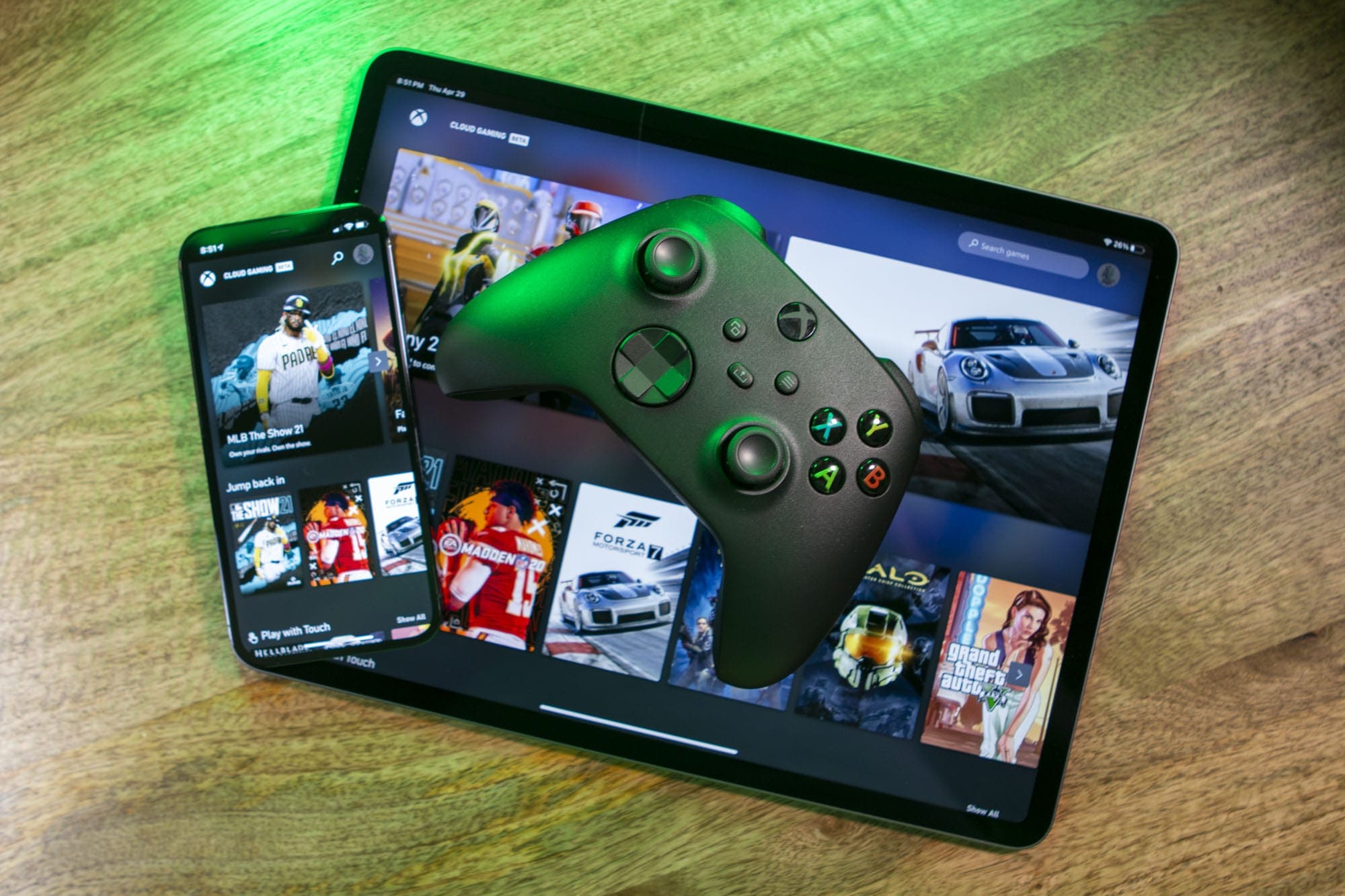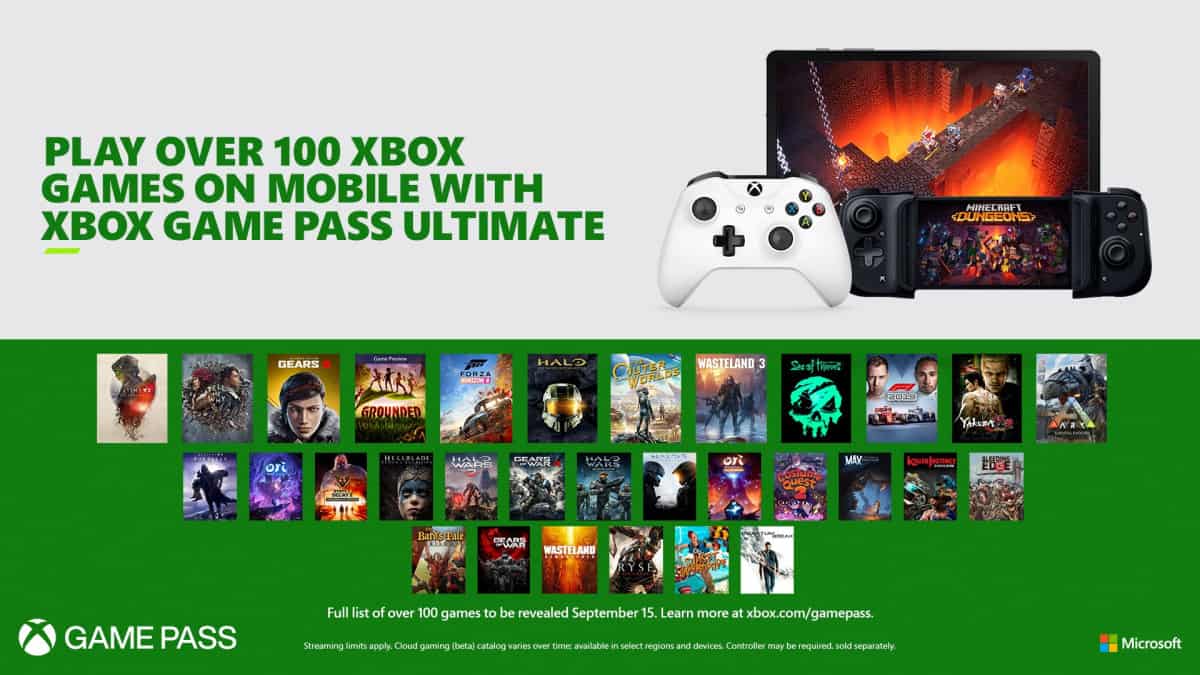Mac Bare Metal is an enterprise-class Mac cloud platform. With the easy-to-use control panel, it is possible to deploy, manage and scale dedicated, bare metal Apple Mac devices.
Xbox Cloud Gaming On Ios
A number of predefined Mac mini device configurations (Intel and M1) are available on demand with instant activation. See pricing >
Apple macOS 11.3 or greater (via browser). Any devices with the following browsers: Edge, Safari, and Chrome. It was the name of the public technology preview for cloud gaming that began in September 2019. Cloud Gaming Beta. That's how Microsoft refer to the service on his website. Depending on the device you have, there are a couple of ways you can go about accessing Xcloud. Those with iOS devices will need to access their Xcloud games via a browser, so boot up Chrome.
Due to the exclusivity and the wide variety of configuration options of the Mac Pro hardware, it's available on request only. To receive a non-binding offer, interested customers can request their desired config using the following link.
Mac Bare Metal is ideal for developers and businesses that need a super-fast, secure, always-on Mac Cloud environment. It's typically used for CI/CD purposes for the iOS/macOS build ecosystem and all kind of software testing. Also very popular as a hosting solution for FileMaker Server.
A worth reading article of the Spotify Engineering Team about the advantages of bare metal Macs compared to macOS VMs for CI. In a nutshell: blazing-fast build times, consistent performance, more simultaneous iOS simulators thanks to native GPU acceleration. Read the full story >
Start spending more time on your projects and less time managing your Mac infrastructure. You will receive a CHF10 credit (good for 14 days) when you create a new account. Sign up now >
It is a fully automated bare-metal Mac cloud platform with API support and pay-as-you-go pricing. It comes standard with advanced networking features such as private network, firewall and VPN at no additional cost. And last but not least, every Mac comes with Lights Out Management (LOM) functionality for easy remote management.
Something that is indispensable in the traditional server hardware world is the ability to manage the server via browser even when no operating system is running, to perform actions such as power off/on, access to keyboard, video, and mouse (KVM) etc. This functionality is known as Lights Out Management (LOM) or out-of-band management. Mac Pro and Mac mini devices do not have this functionality as standard. We took up the challenge and developed it ourselves – we call it MetalControl.
MetalControl is the world’s first Apple Mac remote management controller, an in-house-developed and patented product. It's equipped with smart features such as power-button control, power-cord control and Keyboard-Video-Mouse access. Thanks to the unique functionality of MetalControl, tasks such as on-demand provisioning and management of physical Macs are possible via Control Panel and even via API. Literally, it allows you to control the physical Mac like a virtual machine.
Our Mac Bare Metal service comes with advanced networking functionalities as standard, such as private networking (VPC), firewall, and VPN for secure connections to third-party cloud providers or corporate networks. By default, each Mac device is isolated within a secure, private network. It's perfectly suited for both simple and sophisticated network topologies, at no additional cost.

With our simple RESTful API you can automate Mac infrastructure management without using our Control Panel. Explore API docs >
On-demand provisioning
Provisioning a Mac device in the Cloud couldn't be simpler. By using our intuitive Control Panel your dedicated Mac mini is just a few clicks away.
Power button control

Yep, you can control the physical power button. No matter if a short press to turn on the Mac or a press and hold to turn off the Mac. It's almost magical.
Power cord control
Even though you can manage most situations with the power button, there are scenarios where you would like to make your Mac powerless. This is also possible thanks to MetalControl.
Remote console (KVM)
Web-based access to the screen, keyboard, and mouse of your hosted Mac is just a click away. You have control over your Mac even if no network connection to the device is possible.
Control Panel and API
Provision and manage your Mac devices with an easy-to-use Control Panel or API. Trigger a power button push, unplug the power cord, access the screen-console, reboot in recovery mode, reset SMC etc.
Workflows
Thanks to MetalControl, various workflows can be triggered with one click. For example a 'Reboot in Recovery Mode' or a 'Reset SMC' process. And there's more to come.
Predefined device types
A number of predefined Mac mini device configurations are available on demand with instant activation. Due to the exclusivity and the wide variety of configuration options of the Mac Pro hardware, it's available on request only.
Fully dedicated
No noisy neighbours or shared resources to gum up the works and impact your workload. You are getting access to dedicated, genuine Apple Mac devices. In addition, you are provided with root access at the operating system level.
Connect from any OS
You can access your device(s) using Screen Sharing app (included with macOS), Apple Remote Desktop or any available VNC client which gives you direct access to the console. By using a VNC Client, you can even remote connect with a Windows or Linux Box.
Premium data center
Professionally hosted in an ISO/IEC 27001-certified, state-of-art datacenter in Zurich, Switzerland. The Tier 4 data center offers the highest security and availability standards.
Reliable by design
Thanks to redundant power-feeds and UPS systems, an emergency power system with diesel generators, a redundant Internet-uplink connectivity, the infrastructure is designed with maximum reliability in mind and offers guaranteed availability of 99.9%.
Support by experts
Around-the-clock remote support by experienced Mac engineers. A choice between Basic Support (included) Advanced and Premium Support plans, where Premium is designed for enterprises that operate business-critical 24×7 operations.
Virtual Private Cloud
Virtual Private Cloud (VPC) functionality lets you provision and manage secure private network(s) where you can launch your Mac devices. With Mac Bare Metal by Flow, you get highest level of network isolation by default.
Elastic IP Addresses
Dynamically allocate or remap to any of your Mac devices with Elastic IPs (publicly-accessible static IP addresses).
Project Xcloud Macos
/article-new/2020/08/macOS-Public-Beta-1-Feature-wp.jpg?resize=1920%2C1080&ssl=1)
Security Groups

Xbox Cloud Gaming Iphone
With Security Groups, you can easily secure your Mac Cloud infrastructure and define which services and ports are visible on your devices.
Pure connectivity
With each device one dedicated, elastic IPv4 address is included. Unlimited data traffic and an 1 Gbit/s network uplink come as standard. Network traffic is not throttled in any way.
Your browser does not support the video tag.

Update 12/09/20: Microsoft has officially announced that its Xbox cloud gaming service will come to iOS and PC in spring 2021. This story has been updated to reflect the official announcement.
Microsoft has been stymied by Apple’s rules for the App Store, which all but prohibit the company from bringing its Xbox game streaming service to iOS devices. The company has updated the Xbox app to let you stream games from your own Xbox on the same local network, but you won’t be able to stream games from Microsoft’s cloud servers.
With the App Store rules requiring Microsoft to list every single streaming game as a separate App Store release with its own ratings and download and icons and so on, how could Microsoft possibly end up on your iPhone or iPad?
The answer is: by avoiding Apple’s ecosystem in favor of the open web. Much like Amazon’s Luna gaming service, Microsoft will build a web-based solution that gamers can access on their iOS devices.
Mac Os Cloud Backup
While Apple likely views this as a victory—proof that its policies do not prevent such services from being enjoyed on its devices—it’s really just more evidence that Apple’s platform is too restrictive for some developers and services, and requiring the use of less-ideal and customer-friendly web apps, where other platforms get native apps.